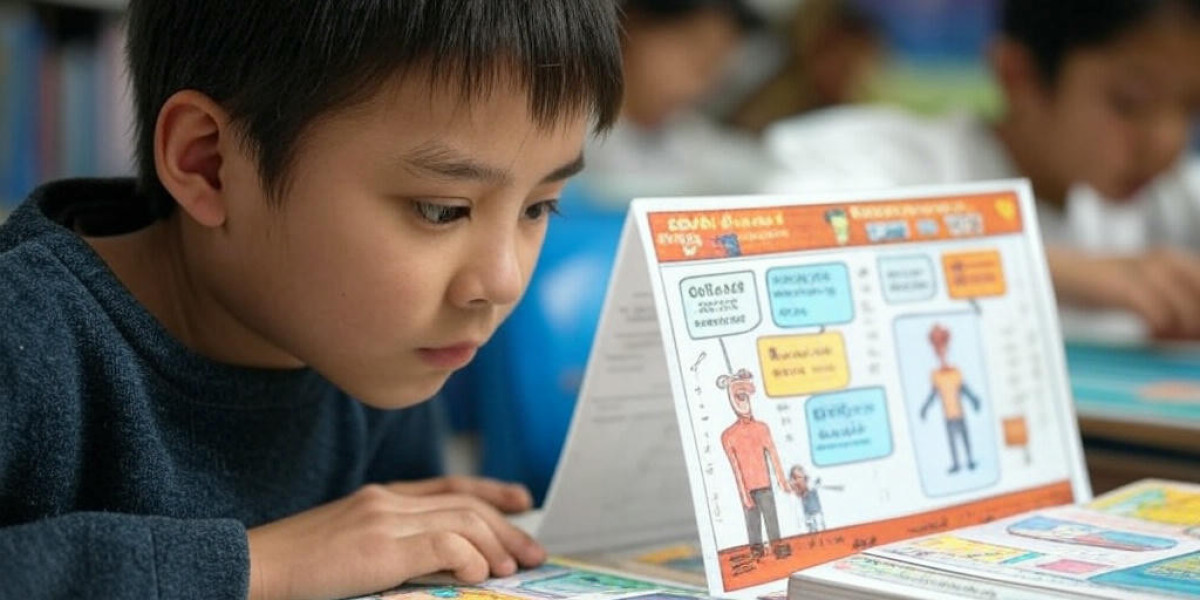Financial literacy is an essential skill that can set the foundation for a lifetime of financial stability and success. Simply put, it’s the ability to make informed and responsible decisions about money—whether saving, investing, spending, earning, or borrowing. Financial literacy also involves understanding complex concepts like interest rates, inflation, and financial tools such as credit cards, loans, and bank accounts. Teaching kids financial literacy from a young age helps them develop the skills and behaviours needed to manage money wisely, avoid common financial pitfalls, and take control of their financial futures.
The Importance of Financial Literacy
Financial literacy isn’t just about managing money; it’s about ensuring that individuals can make smart financial decisions that will affect their long-term success. Research supports the importance of financial education, particularly in childhood. Louise Hill, Co-founder and CEO of GoHenry, explains that financial literacy has been shown to increase early-career earnings by up to 28%. Students with strong financial literacy are also more likely to start their own businesses. Furthermore, financial literacy provides long-term benefits. A study by Cambridge University highlights that financial habits begin to form as early as the age of seven, meaning the financial behaviours kids adopt early on will influence the decisions they make throughout their lives.
Sam Sims, Chief Executive of National Numeracy, stresses that feeling confident with numbers is a crucial life skill, especially when it comes to money management. According to Sims, daily decisions involving money, from paying bills to grocery shopping or saving for a holiday, require numerical confidence. Without this, it becomes challenging to control one’s finances effectively.
Despite its importance, financial literacy is often overlooked in formal education. While financial literacy has been a part of the secondary school curriculum since 2014, many young people still feel underprepared to make informed financial decisions. A study by the London Institute of Banking and Finance found that 82% of young people want to learn more about financial products like mortgages, credit cards, and loans. They also expressed interest in learning about budgeting, debt management, and taxes—topics that are critical for understanding personal finance.
Why Should Financial Literacy Be Taught in Schools?
In today’s fast-paced and increasingly complex financial world, it is more important than ever to equip children and young people with the skills to manage money. Financial education gives kids the tools they need to plan for their future, remain financially secure, and avoid accumulating debt later in life. Stewart Perry, Director of the Centre for Financial Capability, notes that teaching financial literacy through schools is a critical way to boost children’s financial confidence and resilience. This foundation will serve them well when they face economic challenges as adults.
Unfortunately, not every child receives financial education. A report found that only 4 in 10 children have had financial education at school. While many schools and colleges want to increase their focus on financial education, the pressures of a packed curriculum and a lack of resources can hinder progress.
Talking to Your Kids About Money
One of the most effective ways to teach kids about financial literacy is by incorporating money discussions into everyday conversations. The best financial lessons don’t need to be formal lectures; instead, they can come from real-world scenarios. Whether you’re buying groceries, paying bills, or using an ATM, these moments provide natural opportunities to talk about where money comes from and how it’s spent. By making these discussions a part of daily life, children can begin to understand the basics of money management in a practical and approachable way.
Research from the Consumer Financial Protection Bureau (CFPB) reveals that kids start developing their values and attitudes about money at a young age. Giving children an allowance or pocket money can provide them with a hands-on way to practice these financial skills. Louise Hill suggests that real-life practice with money teaches kids critical skills like planning ahead and understanding delayed gratification. Financial education for kids should focus on helping them make informed decisions about spending and saving, fostering a healthy relationship with money from an early age.
As children enter their teenage years, conversations about money should become more in-depth, covering topics such as credit scores, loans, and the stock market. Parents can link these discussions to current events, what teens are learning in school, or their career and life goals, helping them understand how financial concepts apply to their future. By gradually introducing these more complex ideas, parents can prepare their kids to make sound financial decisions as they transition into adulthood.
The Benefits of Financial Literacy From an Early Age
Teaching kids financial literacy offers significant benefits that will serve them throughout their lives. Research has shown that children who receive financial education from a young age can be significantly better off financially later in life. A study indicated that kids with early financial education could be £70,000 richer by the time they retire compared to their peers who did not receive similar education.
Financial literacy enables kids to become financially independent, make better financial decisions, avoid debt, and build wealth over time. Here are a few key benefits:
Financial Independence: Children who understand personal finance become more self-reliant and are less likely to need financial support from others.
Better Decision-Making: Financially literate individuals make informed choices about spending, saving, borrowing, and investing, leading to better financial outcomes.
Debt Management: By understanding concepts like interest rates, loan terms, and credit scores, financially literate children are better equipped to manage and avoid debt.
Building Wealth: Financial literacy helps individuals make smart investment choices, ensuring they can build wealth for the future.
Financial Security: Financially literate individuals can handle unexpected financial challenges and plan for long-term goals like retirement, giving them a sense of security.
Avoiding Financial Pitfalls: Financial education helps individuals avoid scams, predatory lending practices, and other financial traps that can derail their financial well-being.
Responsibility and Accountability: Learning money management from a young age instills a sense of responsibility and helps children develop good financial habits.
Empowerment: Ultimately, financial literacy empowers individuals to take control of their finances, pursue their dreams, and live life on their own terms.
Key Components of Financial Literacy
At GoHenry, we believe there are six key components of financial literacy that are essential for kids to learn. These are: earning, spending, saving, investing, borrowing, and protecting. Let’s take a closer look at each one.
Spend: Understanding the value of money is crucial. Teaching kids the difference between needs and wants is a fundamental step in ensuring they don’t overspend. Helping children budget, plan purchases, and understand the true cost of items is essential for making responsible spending decisions.
Save: Saving is about more than just putting money away. Kids need to learn why saving is important, how to set savings goals, and the difference between short-term and long-term financial goals. Showing children how to create saving accounts and practice delayed gratification lays the groundwork for financial stability.
Earn: Earning money teaches kids the value of hard work and helps them understand financial transactions. Kids who work for their money—whether through chores, a part-time job, or entrepreneurial ventures—will learn important lessons about wages, taxes, and the value of effort.
Borrow: Understanding the concepts of borrowing and credit is critical to avoid future financial difficulties. Teaching kids about loans, interest rates, credit scores, and repayments will help them make informed decisions when they enter adulthood.
Invest: Introducing kids to investing can help them understand how to grow their wealth. This includes teaching them about long-term investments, stocks, bonds, and even tax-free options like ISAs. Knowing how to invest is a crucial step toward financial independence.
Protect: Financial protection involves learning how to safeguard personal finances from scams, fraud, and identity theft. Educating kids about digital security, creating strong passwords, and keeping their personal information safe is a key part of financial literacy.
Practical Activities to Build Financial Literacy
There are several hands-on activities parents can use to help their kids build financial literacy:
Give Them Pocket Money: Regular pocket money teaches kids how to manage finances. With apps like GoHenry, children can have their own prepaid debit cards to manage their spending and learn budgeting.
Use Financial Education Apps: Many apps offer interactive tools, quizzes, and videos that make learning about money fun and engaging for kids.
Start Budgeting: Teaching kids to budget their pocket money helps them develop a healthy relationship with money. Show them how to allocate money for savings, spending, and giving.
Set Savings Goals: Help kids create savings goals, whether it’s for a short-term purchase or a long-term investment. This reinforces the importance of saving for the future.
Encourage Summer Jobs: Summer jobs can teach kids about earning, taxes, and managing a paycheck. It also introduces them to the concept of time management and work-life balance.
Common Financial Mistakes to Avoid
Teaching kids about common financial mistakes can help them avoid making costly errors in adulthood:
Spending More Than You Earn: Kids need to learn the importance of budgeting and living within their means.
Not Saving for the Future: Emphasize the value of saving for future needs and emergencies, as well as for retirement.
Ignoring Debt: Kids must understand that borrowing money comes with responsibilities, such as repaying loans on time.
Not Understanding Interest Rates: Kids need to grasp how interest rates affect savings and loans.
Ignoring Financial Planning: Teaching kids to set financial goals and create a plan to achieve them is key to long-term financial success.
By fostering financial literacy early on, we can equip the next generation with the tools they need to thrive financially, make informed decisions, and secure a bright future.








